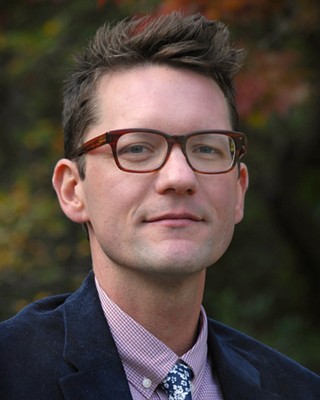Picture if you can a man serving a life sentence in prison for a violent crime. Before him and a dozen others like him is a slight woman teaching them to stretch purposefully, breathe mindfully and to practice ahimsa, a tenet of hatha yoga that is Sanskrit for “do no harm.”
“There’s a guard down the hall, but it’s just me. I trust them. We have a rapport,” says Diane Sherman, a volunteer who has taught beginning and advanced yoga classes at the Airway Heights Corrections Center since 2010. “For some of them, the only way to feel a sense of liberation is through this. It’s a possible route to them being OK with their predicament.”
It wasn’t that long ago that the ancient practice of yoga entered the American mainstream, but now it’s found it’s way into even unlikelier venue: prison.
In an era of slashed budgets, many states have cut funding for programs at their corrections facilities. But in more and more prisons and jails across the country, officials are discovering the joys of yoga, a low-cost way for their inmates to reflect on their wrongdoings while getting a bit of exercise.
“We are very much for it,” says Risa Klemme, public information officer for the medium security facility in Airway Heights. “It’s a positive thing to be doing with their bodies. It is a stress reliever. Being in prison is stressful. You’re away from your home, your family. … And [yoga] comes at no cost to the taxpayer.”
It’s no wonder prison administrators are looking for ways to save money. In Washington state, the governor’s proposed budget for corrections in the upcoming biennium is $1.7 billion. In Idaho, positions in the state’s corrections department were eliminated, the remaining staff faced furloughs and in a bid to cut long-term costs, the state shifted money to privately run prisons.
But it’s not all about money. A recent study published in the International Journal of Yoga Therapy showed that inmates who stuck with yoga classes while behind bars had a significantly lower re-incarceration rate than those who attended just a class or two.
“There is growing evidence to support the teaching of spiritual practices, such as yoga and meditation, in prisons,” the study reads. “[Yoga] can safely and effectively be taught in prison to a varied population, irrespective of religion or race.”
Tanner Murphy, a 17-year-old Coeur d’Alene native, has been in the Kootenai County Juvenile Detention Center “like 15 times for drug problems,” he says. “The last time was for six months.”
He’s been out for a while now, but during his most recent stint, he took a yoga class for kids taught by Jenifer Harbour.
“Being [incarcerated] was super stressful, so it was nice to have something relaxing,” he says. “I can still struggle with not being calm. It helps me relax. … [Yoga] helps me be quiet for a while.”
Murphy’s obviously a believer in yoga. But Harbour, who was a court-appointed special advocate for many years, says it took her more than a year to convince officials at the detention center to give the class a shot.
“It was very clear that many of the staff thought I was the devil,” Harbour says. “They thought I was going to come in and burn incense. They said I was going to come in and convert these kids. Convert them to what?”
Her persistence won out. Now her weekly class is filled with 25 to 80 kids.
“The thing they love about it is they do it for themselves,” she says. “Nobody’s watching over them.”
Harbour says it’s not so much the spiritual, reflective side of yoga that interests the kids she teaches. It’s the physical side.
“What yoga does is it puts you in your body,” she says. “Many of these kids don’t want to be in their own skin. They’ve turned to drugs, fighting, prostitution. … Yoga is an alternative to all of these things.”
While she’s had her share of sour practitioners, she says the positive responses she receives far outweigh the negative ones.
“There’s just not a lot of opportunity for change with adults,” she says. “Kids can change. We don’t want them going to the big jail.”
Natalie Cielle, executive director of the Redmond-based nonprofit Yoga Behind Bars, says change is still possible, even for the most hardened adult.
“Change is our nature,” she says. “I’ve seen amazing changes. Students in my yoga classes in prison are more receptive and they take it seriously. A lot of them are ready for change.”
Cielle’s group has 35 yoga teachers that practice at seven different facilities — all at no charge to the state since the nonprofit is fueled by individual donations.
“We teach in prisons and jails, we teach men and women and we teach adults and children. So we see everything,” she says. “Across the board, it matters to them a lot. They are incredibly grateful for the opportunity. There are just not a lot of programs left in prison. They’ve been gutted.”
Sherman, who teaches men in Airway Heights, says she believes adults have the capacity to change as well. In fact, she’s staked her livelihood on it and is currently developing a yoga and writing program called Bare Bones, which she says will enhance the therapeutic qualities of yoga. She hopes to bring the practice to her students in prison.
“I am very interested in inner and outer freedom,” says Sherman. “Yoga has the power to change their lives. If they stick with it, they definitely can reform.”





















